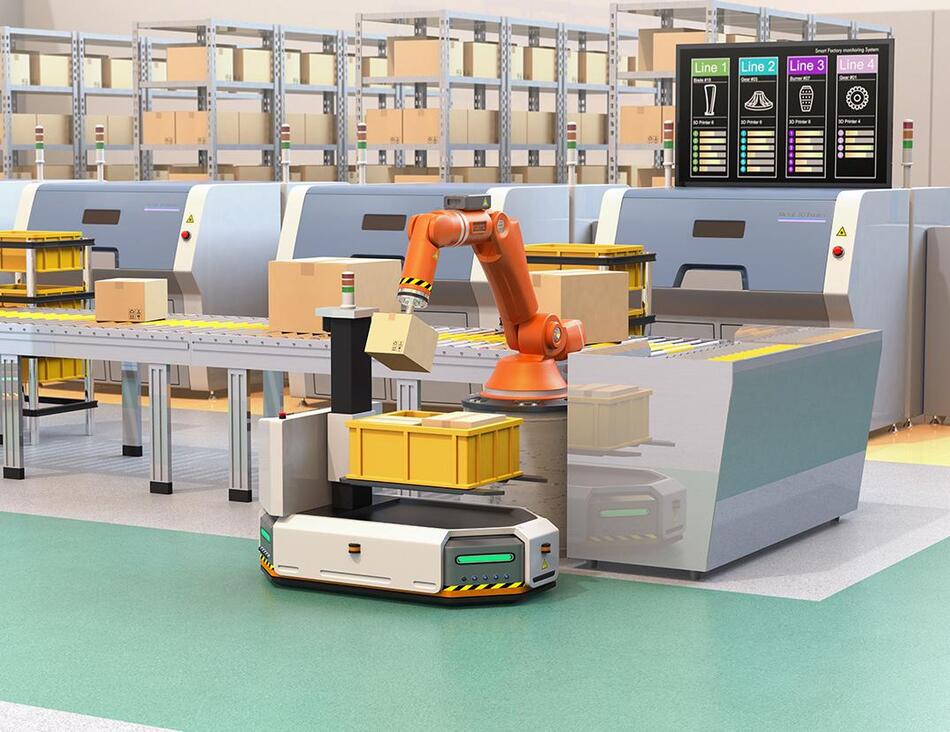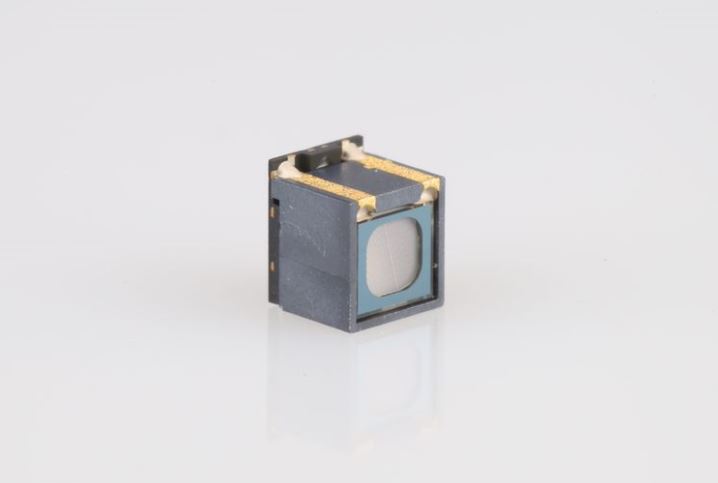
Belago1.1 Dot Projector combines VCSEL chip, optics and robust package.
-
Belago1.1 Dot Projector combines VCSEL chip, optics and robust package.
-
Component enables the creation of high-resolution maps of the environment to help robots avoid collisions with people or obstacles.
-
Belago1.1 extends ams OSRAM’s comprehensive portfolio for all three 3D sensing methods.
Premstaetten, Austria (29th June, 2021) -- ams OSRAM (SIX: AMS), a global leader in optical solutions, expands its 3D Sensing portfolio with the Belago1.1 Dot Projector. While it will take some time before autonomous vehicles become mainstream, robots and automatic guided vehicles are becoming more advanced and carrying out more tasks than ever before. Technological developments in the field of 3D sensor technology are driving this trend. A key component of these systems are infrared light sources, such as ams OSRAM's Belago1.1. The Dot Projector combines a VCSEL chip with special optics and a robust package that is ideally suited for environment sensing via Active Stereo Vision (ASV) in robots and
Automatic Guided Vehicles (AGVs).
"Consumer robots such as robotic vacuum cleaners or lawn mowers, and industrial AGVs and autonomous mobile robots need ‘eyes’ to navigate around their environment," explains Matthias Gloor, Product Manager at ams OSRAM. "With our Belago1.1 Dot Projector, we provide vision to robots by helping construct a high-resolution map of their surroundings and enabling high-quality obstacle detection in a package that is easy to integrate for our customers.”
Active Stereo Vision uses two special infrared cameras to read the pattern that the Dot Projector projects onto a defined field-of-view, that is invisible to humans. By comparing the perspectives of the scene from both cameras, depth is calculated, resulting in a high-quality threedimensional map. If an object is located in front of the robot, it is visible on the 3D map and allows the robot to take action, such as stopping or going around the obstacle.
Micro Lens Array provides special dot pattern
The random dot pattern of the Belago1.1 consists of 5,000 individual light dots, which are generated by combining the infrared VCSEL with a proprietary optical system (Micro Lens Array, MLA). This interaction also ensures high-image contrast for the two infrared cameras, which in turn enables a high-quality map of the environment. The Belago1.1 emits light with a wavelength of 940 nanometers and achieves an optical power of up to 750 mW. The robot’s path is reliably detected at a distance of one to three meters to avoid collisions. The Dot Projector combines the VCSEL chip, micro lens array and package in a single component, thereby greatly reducing the integration effort for system manufacturers. The compact dimensions of 4.2 mm x 3.6 mm x 3.3 mm allow customers to develop space-saving system designs. Also, a separate safety component (so-called interlock) is integrated, which ensures eye safety. This component detects if the optics are broken or removed and immediately switches off the light source.

Image: ams
The Belago1.1 Dot Projector extends ams OSRAM’s comprehensive 3D sensing portfolio. The device combines a VCSEL chip, optics and package, greatly simplifying the integration effort for system manufacturers.
As part of Active Stereo Vision solutions, the Belago 1.1 enables the creation of high-resolution, three-dimensional maps of the environment to help mobile robots avoid collisions with people or other vehicles, such as forklifts.
Belago1.1 Dot Projector used in 3D systems enables additional emerging applications that require a high-resolution three-dimensional map, such as face authentication for access control and payment terminals. But also applications like volume measurement with cameras along the logistics chain as well as gesture detection in consumer products for gaming, home gym and device control can easily be realized.
To evaluate the Belago1.1 Dot Projector and the 3D performance of an Active Stereo Vision system built with it, ams OSRAM offers Hermes, a 3D camera evaluation kit. It is designed to help customers with the component- and system evaluation. Thanks to an additional software development kit, Hermes can be easily integrated into various environments to build proof of concepts in the lab. Besides the Belago1.1, ams OSRAM has a comprehensive portfolio of illumination modules and sensors for all three
3D sensing methods -
Active Stereo Vision (ASV),
Structured Light (SL) and
Time of Flight (ToF).












